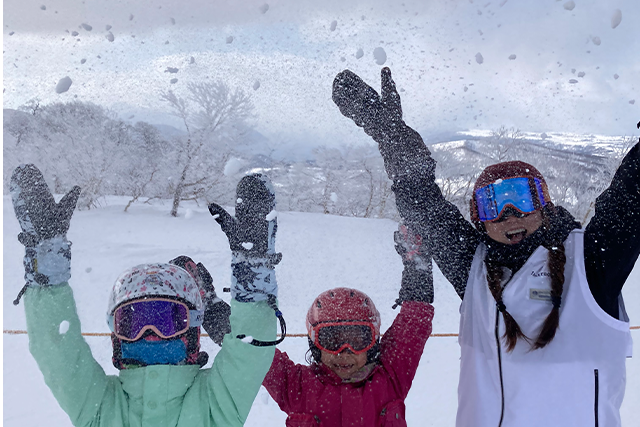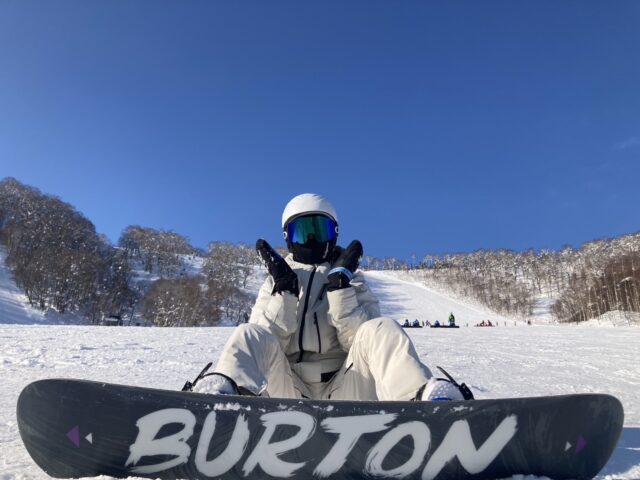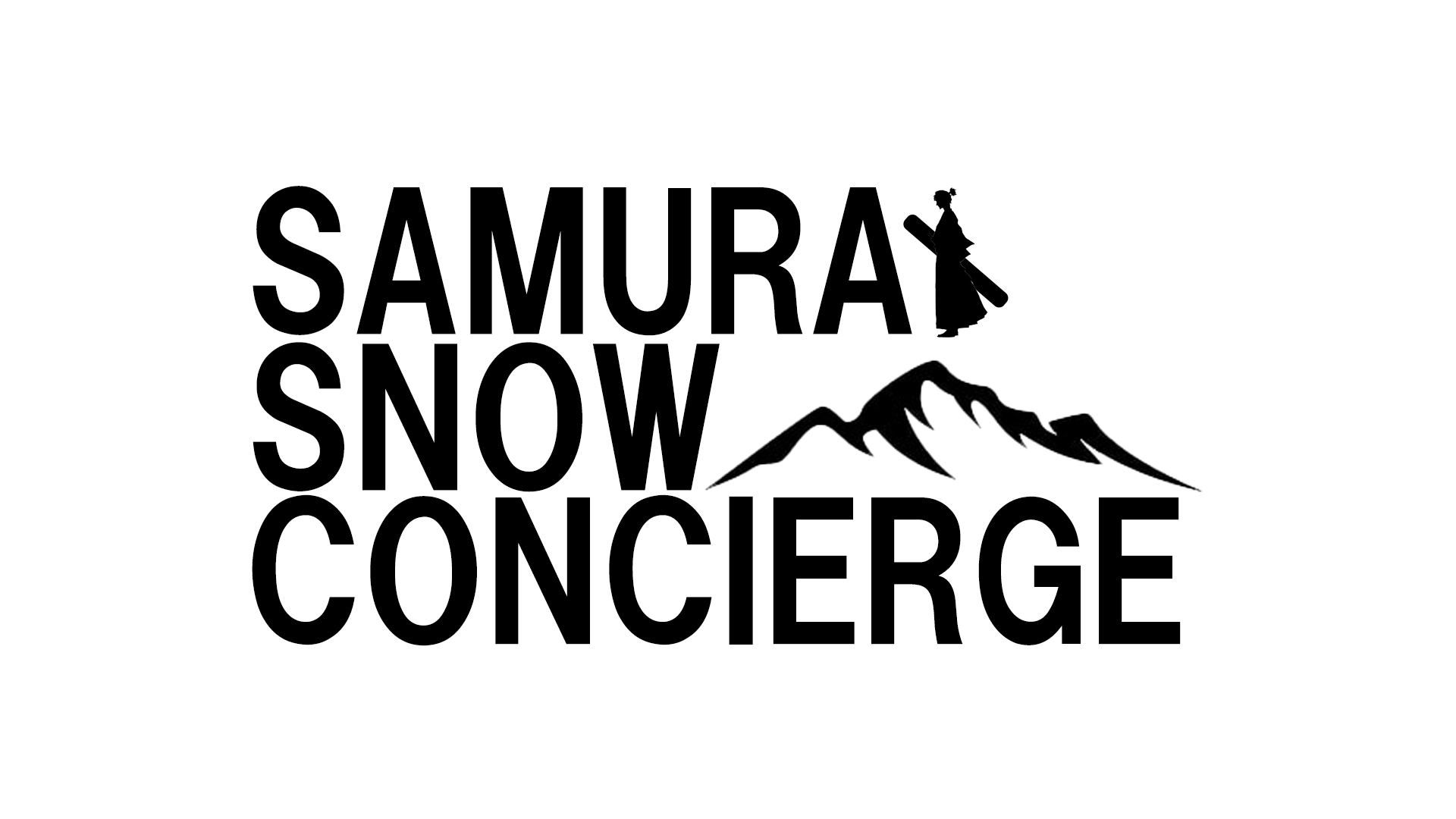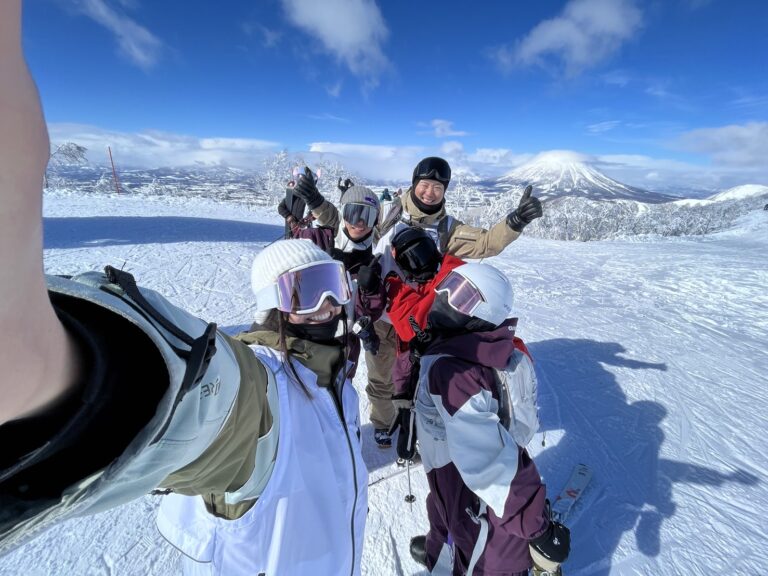“This is the year I’m finally going to try snowboarding!”
“I only tried it once ages ago, but this year I want to actually learn how to ride!”
If this sounds like you, you’re not alone.
At the same time, you might also be feeling a little worried:
“Will I really be able to ride properly?”
“What if it hurts when I fall?”
For first-timers and beginners, the best way to learn safely and quickly is by joining a snowboard school and getting proper instruction from a professional.
In this article, we’ll explain why lessons are so valuable for beginners, what a typical lesson looks like, and how to choose the right lesson to help you progress faster.
Why Beginners Should Join a Snowboard School
As mentioned earlier, if you’re new to snowboarding, lessons at a school are highly recommended.
The biggest reason? You’ll learn to ride much faster.
An instructor will teach you the correct stance, where to look, how to fall safely, and how to stop properly—all the fundamentals you need to avoid wasting time and to progress smoothly.
Since they’ll actually watch you ride and point out what to fix, you don’t have to worry about developing bad habits that hold you back later.
In addition, many beginners don’t know the correct way to wear ski clothing, tighten their boots, set up their bindings, or safely get on and off a lift. In a lesson, you’ll learn all of this from the start.
So if you want to:
Learn to ride as quickly as possible
Enjoy snowboarding safely
…then joining a school is the way to go.

The Risks of Learning on Your Own
At ski resorts, it’s common to see beginners trying to learn from friends or family. But if they don’t have instructor qualifications, it’s not a good idea.
Teaching yourself, or learning from someone without the right knowledge, comes with serious risks. Let’s look at them:
1. Higher risk of injury
The most common snowboarding injuries are:
Sprained or broken wrists
Concussions from hitting your head
These usually happen because of unsafe falling techniques, poor body posture, incorrect equipment setup, or riding on slopes that are too difficult.
Without proper instruction, it’s easy to end up in these dangerous situations.
2. Slow progress → loss of motivation
Snowboarding only becomes truly fun once you can link turns smoothly. Self-teaching often makes learning turns very difficult, which can lead to frustration.
If you don’t see progress, you might give up before you ever experience how fun snowboarding can be.
3. Developing bad habits
Practicing without guidance often leads to bad habits—for example:
Sticking your hips out during heel-side turns
Dropping your head during toe-side turns, throwing off balance
Once learned, bad habits are hard to fix and will slow down your progress.
4. Difficulty with lifts
Getting on and off lifts is often one of the scariest challenges for beginners. Without guidance, it can be dangerous. In lessons, instructors assist you directly, so you can ride lifts with confidence.
5. Risking others’ safety
If you can’t control your speed or stop properly, you risk not only injuring yourself but also colliding with other riders.
For everyone’s safety and enjoyment, learning the right way from the start is essential.
What Are Snowboard Lessons Like?

Lesson length
Most schools offer half-day or full-day lessons. Typical times:
Morning: 9:00–11:00 or 10:00–12:00
Afternoon: 13:00–15:00 or 14:00–16:00
Private lessons can often be scheduled flexibly to match your availability.
Lesson costs (Hokkaido example)
Group lessons
Half-day: ¥7,000–10,000
Full-day: ¥10,000–15,000
Private lessons
Half-day: ¥25,000–30,000
Full-day: ¥40,000–50,000
Group lessons are cheaper but may involve waiting while others are being taught, and differences in ability within the group can slow progress.
Private lessons cost more, but since the instructor focuses only on you, progress is much faster and safer.
Can I join alone?
Absolutely! Many private lessons are designed for individuals, and solo learners often improve the fastest.
If you prefer company, you can also take family or group private lessons with friends.
How to book
Booking in advance is highly recommended, especially around holidays like New Year or spring break. If your travel plans are flexible, contact the school early to secure a spot.
What Do Beginner Lessons Cover?
Here’s a general flow of what to expect in a beginner lesson:
Equipment check
stance angles, bindings, clothing, boots, etc.
Warm-up
especially wrists and neck to prevent injuries.
How to fall safely
essential, since beginners will fall a lot.
One-foot practice
learning to move with one foot unstrapped.
Side-slip
sliding sideways down the slope, first facing forward, then backward.
Riding the lift (with support)
instructors assist until you’re comfortable.
Leaf riding
controlling your movement side-to-side like a falling leaf.
Turning (if ready)
some beginners reach this stage in their first lesson.
By the end of even one lesson, most beginners feel comfortable on the slopes.
How to Choose the Right Lesson
1. Check for private lessons
Private lessons are the fastest way to improve. Be sure your school offers them.
2. Instructor qualifications
In Japan, snowboard instructors are certified by the JSBA:
A-level (highest)
B-level
C-level
If possible, choose a school with A-level instructors.
3. Instructor experience
Experience teaching is just as important as riding skill. An instructor who has taught 1,000 students will almost always be more effective than one who has taught only a handful.
Check the school’s website for instructor profiles and experience.
Conclusion
For snowboard beginners, joining a school is the quickest and safest path to improvement. Don’t waste your trip struggling on your own—learn the right way, enjoy faster progress, and discover just how fun snowboarding can be.
At Samurai Snow Concierge, we’re active A-level instructors based in Rusutsu, Hokkaido, specializing in private ski and snowboard lessons.
If you have any questions about beginner lessons or how to practice effectively, feel free to reach out. We’re here to help—and we look forward to riding with you!








コメント